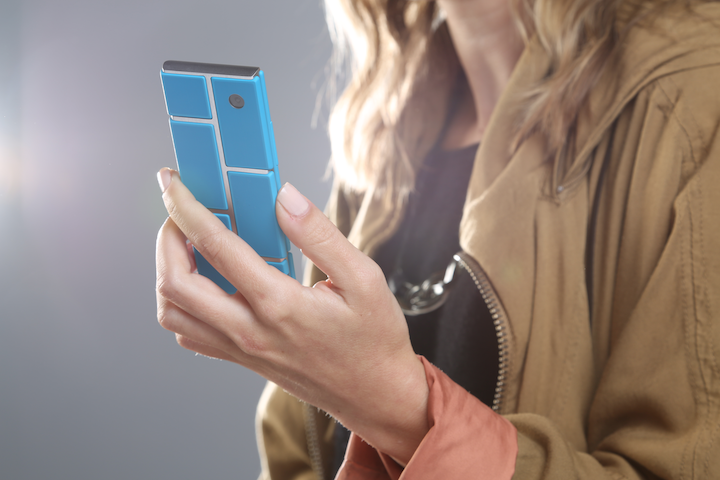
Google has revealed it hopes to have a phone from its Project Ara initiative on the market by January 2015. It’s the first time the company has offered such a specific launch date, indicating that its ambitious modular-phone initiative is making good progress.
Those interested in developing pieces for the unique handset have for the last two days been gathered together at the first Project Ara Developers Conference, taking place a stone’s throw from Google’s global headquarters in Mountain View, California.
Project Ara leader Paul Eremenko said at the conference Tuesday that its first device will be the “Gray Phone”, which will sell for around $50. If you think gray sounds a bit, well, boring for a launch phone, then that’s kind of what the team behind the handset are thinking, too.
“It’s called the Gray Phone because it’s meant to be drab gray to get people to customize it,” Eremenko explained.
Build-your-own handset
If you’ve got this far and are still wondering what on earth this Ara phone thing is all about, think of it as Google’s attempt at creating a highly customizable build-your-own handset where you kit out a basic frame with various modules according to your smartphone habits and needs.
Avid photographers, for example, will probably opt for the best available camera module, while those who prefer a physical keyboard to an on-screen one will be able to add such a part. In the recently released Module Developer Kit, there was even mention of a Pulse Oximeter Module as well as a Thermal Imager Module, so we can eventually expect to see a vast array of parts once developers really get stuck in.
The Android phone will launch with frames in three sizes. The bigger the frame, the more modules you can add, bringing more features to your handset. A much-touted advantage of the system is that if a component malfunctions or breaks, you can quickly and easily swap it out instead of trashing the whole device. Likewise, if your smartphone requirements change, you can effectively redesign your handset by choosing different modules.
This week’s Mountain View conference hopes to provide developers with information, as well as inspiration, for building the first Ara modules. More gatherings are planned for July and September.
Project Ara is led by Google’s Advanced Technology and Projects Group (ATAP), which used to be part of Motorola Mobility. The Web giant held on to the group when it sold Motorola to Lenovo back in January.
[via Cnet]
Editors' Recommendations
- I can’t wait for Nothing to launch this stunning phone
- 5 phones you should buy instead of the Google Pixel 8
- This Google Pixel 8a leak just spoiled everything about the phone
- Have one of these Google Pixel phones? You’re getting Circle to Search
- 5 phones you should buy instead of the Google Pixel 8 Pro